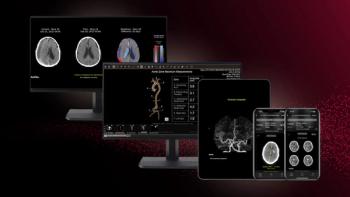
Toshiba shows PowerVision cardiac systems
Toshiba America Medical Systems showcased two models of cardiac ultrasound systems, members of the company’s PowerVision family, at this year’s American College of Cardiology convention in March. The PowerVision 6000 was released two years ago
Toshiba America Medical Systems showcased two models of cardiac ultrasound systems, members of the companys PowerVision family, at this years American College of Cardiology convention in March.
The PowerVision 6000 was released two years ago and the PowerVision 8000 was released at the Radiological Society of North Americas annual meeting last year. A combination of hardware and software allows both systems to perform head-to-toe scanning using a number of applications, including contrast agents, harmonic tissue imaging, and digital imaging.
The difference between the two systems lies in the number of channels, said Scott Yarde, Toshibas ultrasound marketing manager. The 6000 model has 256 channels and the 8000 model has 512 channels.
In addition to plug-and-play transducers, the PowerVision 8000 contains an integrated digital information system package that Tustin, CA-based Toshiba has named PowerView. The PowerView package supports all DICOM service classes and stress echo software. Three-dimensional capabilities and live digital video streaming for telemedicine are being developed.
Clinicians can purchase the PowerView package as an option for the 6000 model. Both systems are capable of quantifying blood flow and perfusion, but these studies have yet to be widely used, Yarde said. The PowerVision 8000 is most appropriate for large, multidepartment hospitals, he said.
Newsletter
Stay at the forefront of radiology with the Diagnostic Imaging newsletter, delivering the latest news, clinical insights, and imaging advancements for today’s radiologists.




























